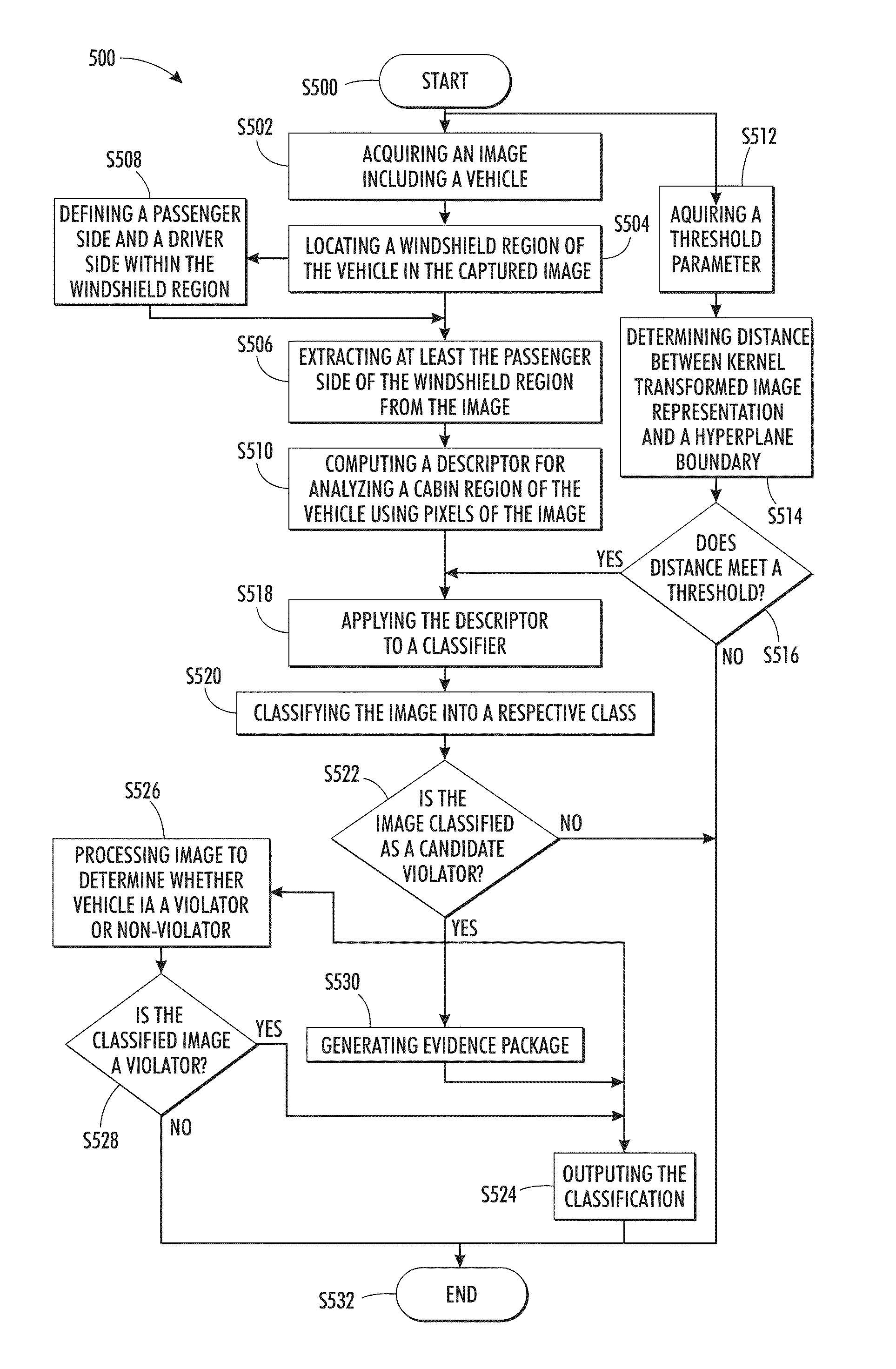Occupancy detection for managed lane enforcement based on localization and classification of windshield images
a technology of windshield image and occupancy detection, applied in the field of image-based method and system for detecting vehicle occupancy violations for managed lane enforcement, can solve the problems of officers being exposed to the dangers of oncoming traffic, wasting billions of dollars in labor and observation costs, and wasting time and money
- Summary
- Abstract
- Description
- Claims
- Application Information
AI Technical Summary
Benefits of technology
Problems solved by technology
Method used
Image
Examples
Embodiment Construction
[0019]The present disclosure relates to a method and a system for automatically detecting vehicle occupancy violations for managed lane enforcement. The system analyzes images that are acquired from a camera having a visible-light blocking filter that is sensitive to only near-infrared (NIR) light. The system then performs the method in two stages. In a first stage, the windshield region is located and extracted from the original image. In a second stage, a feature vector is calculated for representing the windshield region. The feature vector is applied to a classifier, which indicates whether the vehicle is violating or is a candidate of violating the managed lane requirement. A thresholding parameter can be applied to the image by the classifier for further determining whether the system performs the classification process. In another aspect of the disclosure, the system can be continually retrained while on-line using labeled ground truth from a manual verification of candidate ...
PUM
 Login to View More
Login to View More Abstract
Description
Claims
Application Information
 Login to View More
Login to View More - R&D
- Intellectual Property
- Life Sciences
- Materials
- Tech Scout
- Unparalleled Data Quality
- Higher Quality Content
- 60% Fewer Hallucinations
Browse by: Latest US Patents, China's latest patents, Technical Efficacy Thesaurus, Application Domain, Technology Topic, Popular Technical Reports.
© 2025 PatSnap. All rights reserved.Legal|Privacy policy|Modern Slavery Act Transparency Statement|Sitemap|About US| Contact US: help@patsnap.com



